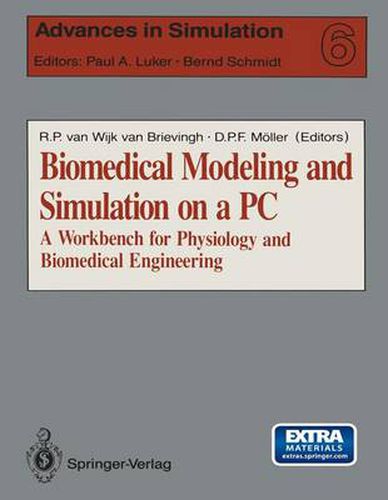Readings Newsletter
Become a Readings Member to make your shopping experience even easier.
Sign in or sign up for free!
You’re not far away from qualifying for FREE standard shipping within Australia
You’ve qualified for FREE standard shipping within Australia
The cart is loading…






This title is printed to order. This book may have been self-published. If so, we cannot guarantee the quality of the content. In the main most books will have gone through the editing process however some may not. We therefore suggest that you be aware of this before ordering this book. If in doubt check either the author or publisher’s details as we are unable to accept any returns unless they are faulty. Please contact us if you have any questions.
I have long had an interest in the life sciences, but have had few opportunities to indulge that interest in my professional activities. It has only been through simulation that those opportunities have arisen. Some of my most enjoyable classes were those I taught to students in the life sciences, where I attempted to show them the value of simulation to their discipline. That there is such a value cannot be questioned. Whether you are interested in population ecology, phar macokinetics, the cardiovascular system, or cell interaction, simulation can play a vital role in explaining the underlying processes and in enhancing our understanding of these processes. This book comprises an excellent collection of contributions, and clearly demonstrates the value of simulation in the particular areas of physiology and bioengineering. My main frustration when teaching these classes to people with little or no computer background was the lack of suitable simulation software. This di rectly inspired my own attempts at producing software usable by the computer novice. It is especially nice that software is available that enables readers to experience the examples in this book for themselves. I would like to congratulate and thank the editors, Rogier P. van Wijk van Brievingh and Dietmar P. P. Moller, for all of their excellent efforts. They should be proud of their achievement. This is the sixth volume in the Advances in Simulation series, and other volumes are in preparation.
$9.00 standard shipping within Australia
FREE standard shipping within Australia for orders over $100.00
Express & International shipping calculated at checkout
Stock availability can be subject to change without notice. We recommend calling the shop or contacting our online team to check availability of low stock items. Please see our Shopping Online page for more details.
This title is printed to order. This book may have been self-published. If so, we cannot guarantee the quality of the content. In the main most books will have gone through the editing process however some may not. We therefore suggest that you be aware of this before ordering this book. If in doubt check either the author or publisher’s details as we are unable to accept any returns unless they are faulty. Please contact us if you have any questions.
I have long had an interest in the life sciences, but have had few opportunities to indulge that interest in my professional activities. It has only been through simulation that those opportunities have arisen. Some of my most enjoyable classes were those I taught to students in the life sciences, where I attempted to show them the value of simulation to their discipline. That there is such a value cannot be questioned. Whether you are interested in population ecology, phar macokinetics, the cardiovascular system, or cell interaction, simulation can play a vital role in explaining the underlying processes and in enhancing our understanding of these processes. This book comprises an excellent collection of contributions, and clearly demonstrates the value of simulation in the particular areas of physiology and bioengineering. My main frustration when teaching these classes to people with little or no computer background was the lack of suitable simulation software. This di rectly inspired my own attempts at producing software usable by the computer novice. It is especially nice that software is available that enables readers to experience the examples in this book for themselves. I would like to congratulate and thank the editors, Rogier P. van Wijk van Brievingh and Dietmar P. P. Moller, for all of their excellent efforts. They should be proud of their achievement. This is the sixth volume in the Advances in Simulation series, and other volumes are in preparation.